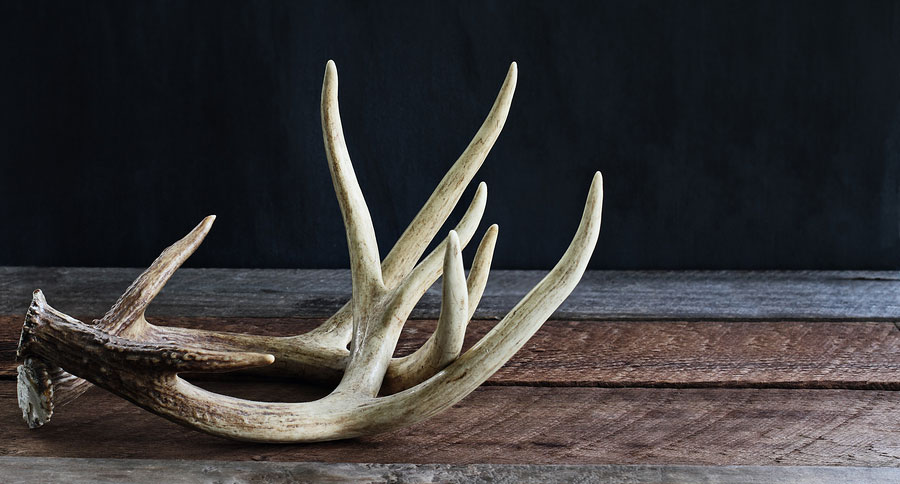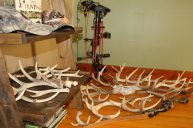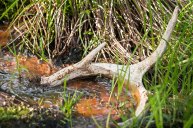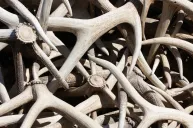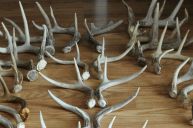The late winter pastime of shed hunting can be quite rewarding.
Who doesn't love walking up on a matched set of shed antlers on public land? However, the most rewarding part of shed hunting can be the insight into your deer herd you gain by putting on the miles.
Many of us are so focused on finding cast antlers while shed hunting, we walk right past key deer sign we can use in the fall.
Finding sheds is only one piece of the puzzle. Use these shed hunting tips next year.
Deer Beds
Want to find sheds? Find the beds. Want to see more deer in the fall? Find the beds. Now is the time to find deer bedding areas. You can identify a deer bed as an oval shape of matted grasses or snow.
There is also going to be plenty of deer scat in the area. If you find a concentration of beds, that is likely a doe bedding area. Find a lone, isolated bed, and that is a buck bed.
During the fall, shed hunters can set up a stand close to the doe bedding area in hopes of catching a buck scent checking the area for an estrous doe.
You could also set up close to the buck's bed, and try to catch him coming back at dawn after spending the night feeding. Either way, you do not want to get too close, and always hunt the appropriate wind.
Highways
After the snow melts and the ground is soft, you can see which trails the deer are using most. During the winter, the main travel routes for deer are from bedding to food sources.
If you can establish their bedding area, you can than find the less beaten trails that will lead to fall food sources. While there is little vegetation, you can navigate much more easily through the woods.
Find the trails from bedding areas to prospective fall food plots and hang sets along these routes. These will be good stands to catch a buck heading out to eat during an early season evening hunt.
Rub Lines
While shed hunting, the thing that stands out the most to me are the number of buck rubs I find. I look for rubs on trees that have at least a six inch diameter. The rub should also be about three feet off the ground.
Those are the trademarks of a mature buck. If I find a row of them, that's the spot. Even if the buck that made them was harvested this past season, it is a proven quality buck area.
Another mature buck should move into this area for the upcoming season. Find a good tree to hang a stand, and use it when hunting the pre-rut next season.
Scrapes
Scrapes are considered to be a deer herd's communication center. As deer frequent a scrape, they check the scent, and then leave their own.
Mature bucks will use the scrapes to keep tabs on the resident does, as well as any competing bucks. I have found most scrape sites are used year after year.
I prefer to hunt over a scape during the fabled "October Lull" to ambush a buck transitioning from a summer pattern to the pre-rut.
Take notice of these telltale buck signs next time you are out shed hunting. They won't fill your pack up, but they have the potential to fill that space over your fireplace with a big buck next fall.
NEXT: THINGS EVERY HUNTER NEEDS TO DO NOW THAT DEER SEASON IS OVER
WATCH
